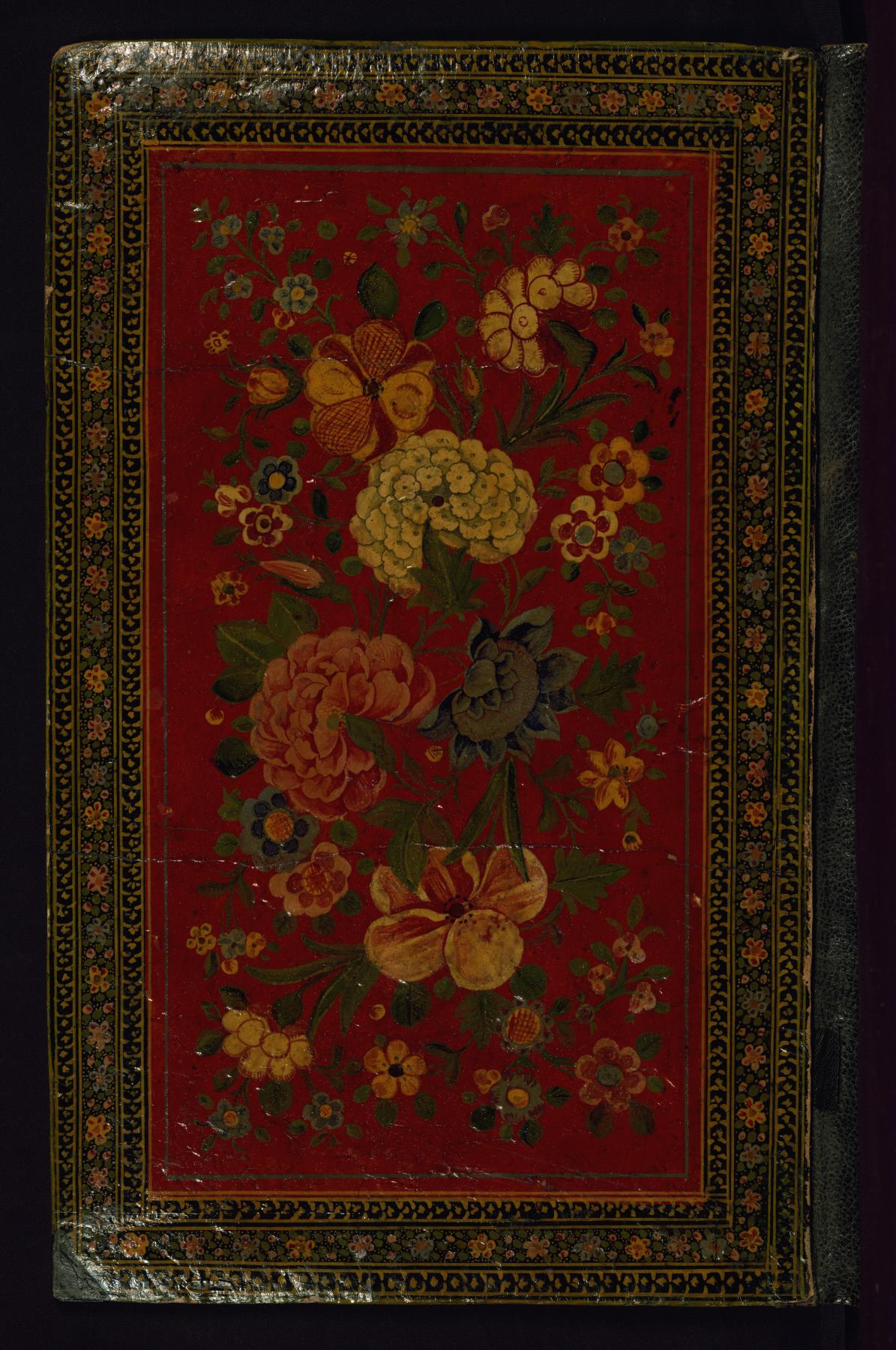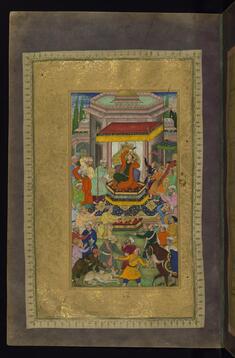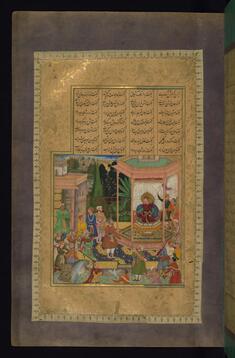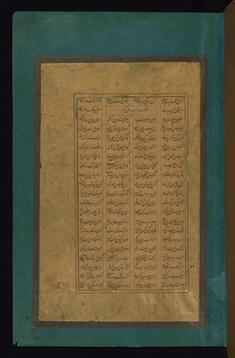Five Poems (Quintet)
(Manuscripts and Rare Books, Islamic World , Islamic Manuscripts)
Walters manuscript W.613 is a fragment of one of the most important illustrated manuscripts produced for the Mughal emperor Akbar: a copy of the Khamsah (quintet) of Nizami Ganjavi (died 605 AH/AD 1209) copied by the royal scribe 'Abd al-Rahim 'Ambarin Qalam in the 40th year of Akbar's reign (1004 AH/AD 1595). It was most likely executed in Lahore. The larger portion of the manuscript, preserved with the colophon, date, and scribe's name, is housed in the British Library (Or. MS 12208). The Walters fragment contains parts of Khusraw va Shirin and Iskandarnamah, with 5 illustrations. The illustrations bear ascriptions to court artists as well as running numbers from 1 to 44. The Walters folios are inscribed with the following names: Sanvlah, Nanha, Shivdas, Dharm Das, and Bim Gujarati.
Provenance
Provenance (from the French provenir, 'to come from/forth') is the chronology of the ownership, custody, or location of a historical object. Learn more about provenance at the Walters.
Henry Walters, Baltimore [date and mode of acquisition unknown]; Walters Art Museum, 1931, by bequest.
Exhibitions
| 1988-1989 | The Royal Style. The Walters Art Gallery, Baltimore. |
| 1984-1985 | Illuminated Manuscripts: Masterpieces in Miniature. The Walters Art Gallery, Baltimore. |
| 1977-1978 | Splendor in Books. Grolier Club, New York; The Walters Art Gallery, Baltimore. |
| 1962 | The Book of Persia and India. Grolier Club, New York. |
Geographies
Pakistan, Lahore (Place of Origin)
Measurements
Folio H: 13 3/8 x W: 8 7/16 in. (34 x 21.5 cm)
Credit Line
Acquired by Henry Walters
Location in Museum
Not on view
Accession Number
In libraries, galleries, museums, and archives, an accession number is a unique identifier assigned to each object in the collection.
In libraries, galleries, museums, and archives, an accession number is a unique identifier assigned to each object in the collection.
W.613










